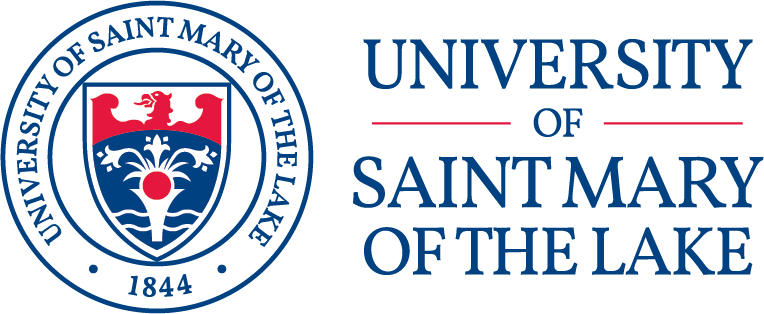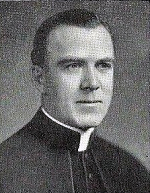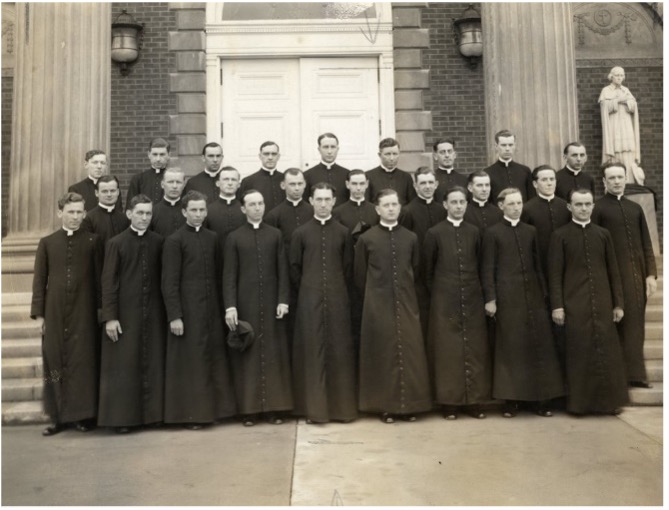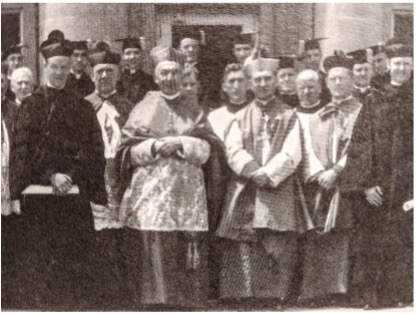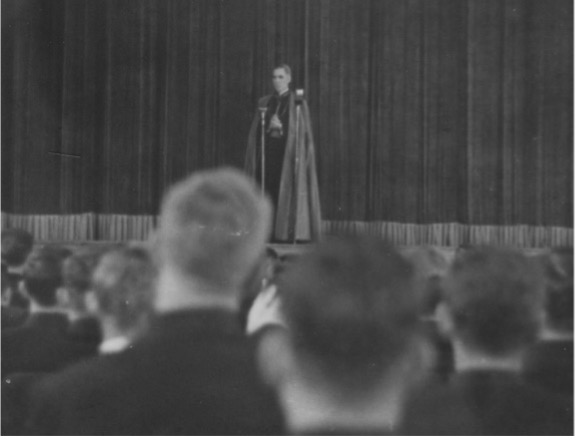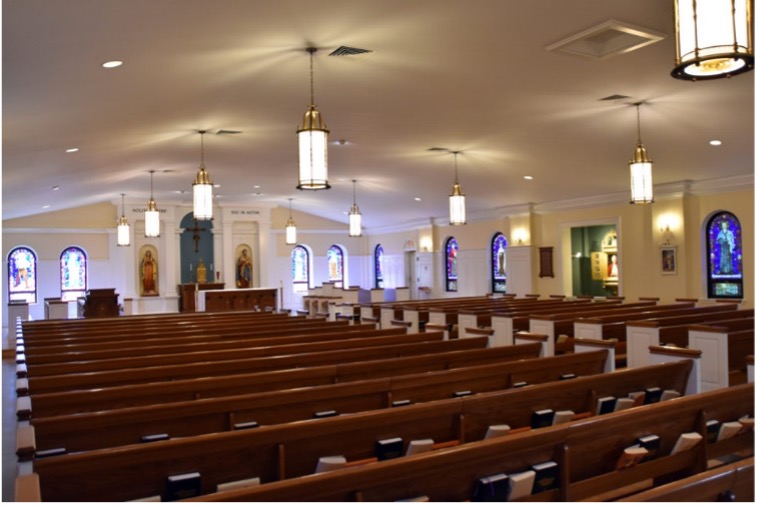

History of USML | Mundelein Seminary
Before there was Mundelein
One hundred years ago, the first group of seminarians entered a philosophy classroom on the University of Saint Mary of the Lake campus at what would eventually become Mundelein Seminary, located in what we now know as Mundelein, Illinois.
George Cardinal Mundelein’s audacious dream of building a Catholic seminary that would serve the whole nation was just getting started.
More than 100 years and thousands of ordained priests later, Mundelein’s dream is alive and well. The University of St. Mary of the Lake/Mundelein Seminary is the major seminary and graduate school of theology for the Archdiocese of Chicago. During that period, the school expanded and flourished by educating and forming deacons and lay men and women called into ministry. In the years to come, the university will continue to strive to serve the Archdiocese of Chicago and beyond.
The Early Years
Founded by the first bishop of Chicago, the Most Rev. William J. Quarter. D.D., the university received its charter in 1844 from the State of Illinois. Chicago welcomed it as the city’s first institution of higher learning, and it flourished until 1866 when financial difficulties forced the school to suspend operations. One of its four schools, the Divinity School, which would become Mundelein Seminary, continued to operate for another year until 1867. The university closed, and the Chicago Fire destroyed the building in October 1871.

In 1918, a site for a major seminary for the Archdiocese of Chicago was found in Area, Illinois, about 40 miles northwest of Chicago. The village was named after a local business school that once stood on the seminary grounds. The name stood for Ability, Responsibility, Endurance, and Action.
During the summer of 1919, Archbishop George Mundelein commissioned Joseph W. McCarthy, a Catholic architect apprenticing under Chicago planner Daniel H. Burnham, to design plans for St. Mary of the Lake. McCarthy was Mundelein’s go-to architect, designing 28 new churches across the Archdiocese of Chicago between 1916 and 1945. During the spring and summer of 1920, work began draining and cleaning the property, re-damming the lake, and installing the infrastructure of roads, bridges, and utilities.
As the Archdiocese of Chicago celebrated its 60th anniversary, Mundelein announced plans on April 27, 1920, to revive the University of Saint Mary of the Lake under the original 1844 charter. A donation of $500,000 from Edward Hines of the Hines Lumber Company was used to start construction of the major diocesan seminary on a property in the town of Area. Today, that sum would be equivalent to a gift of $6.8 million.
On October 5, 1921, Mundelein opened the schools of philosophy and theology as St. Mary of the Lake Seminary under the original 1844 charter. Rev. Msgr. J. Gerald Kealy, D.D., served as the first rector in 1921, overseeing 50 philosophy students and a faculty comprised of members of the Society of Jesus. Kealy would help build and develop the university for the next 15 years. Mundelein dedicated the school on May 25, 1924, and he was elevated to the role of cardinal that same year.
In 1924, theology students began their studies, and Area’s civic boosters renamed their community the village of Mundelein.
Days after Cardinal Mundelein returned from his installation as a cardinal at the Vatican, a ceremony to lay the cornerstone of the Chapel of the Immaculate Conception marked the seminary’s official dedication. A crowd of 30,000 attended the ceremony.

The Chapel of the Immaculate Conception, the centerpiece of the seminary campus, was consecrated at ceremonies on Trinity Sunday, June 7, 1925.
Modeled after the First Congregational Church in Old Lyme, Connecticut, which Cardinal Mundelein had visited as a boy, the main chapel fulfilled his architectural vision for the seminary as distinctly representing American Catholicism, which coincided with his dreams of the seminary one day forming priests for dioceses across the country.
The chandelier hanging in the chapel is one of two that the Austrian government gave to hang in facilities in the United States. The other hangs in the White House in Washington, D.C.
In 1926, an estimated 800,000 faithful traveled to the seminary and saw for themselves the beauty of the campus when the seminary was used as the site for the concluding ceremonies of the 28th International Eucharistic Congress. Crowds of people descended upon Mundelein Seminary via car and rail.
Enrollment at the seminary grew during the late 1920s, as the Dioceses of Springfield, Belleville, Rockford, and Peoria, which together with the Archdiocese of Chicago comprised the ecclesiastical Province of Illinois, sent candidates for the priesthood to St. Mary of the Lake.
In September 1929, Mundelein obtained a five-year grant from the Sacred Congregation of Seminaries and Universities in Rome to establish a Pontifical Faculty of Theology at the seminary, with the power to confer the international degrees of the Catholic Church, the baccalaureate, the licentiate, and doctorate of theology.
In September 1934, the grant was made permanent. The seminary became the first American institution to be honored as a Pontifical Theological Faculty under the new apostolic constitution Deus Scientarium Dominus. During that year, the auditorium was also completed, bringing the total number of buildings on campus to 14.

In 1936, the Rev. Msgr. Reynold H. Hillenbrand was appointed as the second rector.
A proponent of both the liturgical movement and specialized Catholic Action derived from the papal social encyclicals, Hillenbrand anticipated the directions in which the Church would advance in future decades.
His charismatic leadership helped to make Chicago a laboratory for social action and Church reform, which in many ways anticipated the Second Vatican Council.
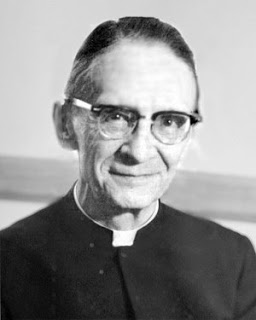
Rector 1936-1944

On October 2, 1939, Cardinal Mundelein died of a heart attack in his home at the seminary at age 67. He is buried in a tomb located behind the main altar of the Chapel of the Immaculate Conception.
Samuel Cardinal Stritch succeeded Mundelein as the Archbishop of Chicago and Chancellor of the university. Stritch began a period of expansion of the archdiocese, and his episcopate represented a period of stabilization in the territory.
Stritch eventually appointed Reuniversity’sachy P. Foley as the university’s third rector in 1944. Foley was known for his personal piety and priestly example.
During the Hillenbrand and Foley administrations, the United States was engulfed in fighting World War II. The demand for military chaplains drew many priests into the service, prompting the seminary to accelerate its formation to fill the positions they left. This period also exemplified the archdiocese’s dedication to supporting the Armed Forces.
It was during the war that a Navy airplane made an emergency landing in one of the seminary’s parking lots on March 9, 1943. The event was recorded in the Philosophy Chronicle, a scrapbook kept by the university throughout the university’s early years. The report stated that “…the only casualties were one slightly damaged plane and one very frightened, but”very fortunate young Navy cadet.”
Seminary Expansion
St. Mary of the Lake hosted several guests and speakers. In 1938, Catholic activist Dorothy Day addressed the seminarians, the first woman to speak at the seminary. Bishop Fulton Sheen also visited the seminary in 1955. During his address, Sheen encouraged the seminarians to be good speakers but “…be humble about it. God will be working through you.”
Following Cardinal Stritch’s death in 1958, the Most Rev. Albert Meyer was named the new Archbishop of Chicago. Through his leadership, a high school seminary campus in Niles, Illinois, opened in 1961, Quigley South Preparatory Seminary. Quigley North Preparatory Seminary was opened in 1918. The Niles campus offered two years of liberal arts programs for the first two undergraduate years, while the Mundelein campus program encompassed upper-class college studies in philosophy followed by four years of theology.
Meyer also served as one of the council presidents during the Second Vatican Council. As a former seminary professor and rector, he advocated against racism and was instrumental in the council’s work on its declaration of religious freedom.
Following Meyer’s death in 1965, his successor, John Cardinal Cody, affiliated the undergraduate program at Niles with Loyola University Chicago and renamed it Niles College of Loyola University. He also appointed the Rev. Msgr. John R. Gorman as the next rector at Mundelein Seminary in 1966. Gorman would lead the seminary through the transitions of the Second Vatican Council.
Now exclusively a graduate school of theology and seminary, St. Mary of the Lake began revising its graduate and theological curriculum and implemented it under the guidance of the Program of Priestly Formation of the National Conference of Catholic Bishops and the directives of the Sacred Congregation for Education. Faculty changes also occurred at the university. Once taught by members of the Society of Jesus, seminarians now attended courses with diocesan priests and lay professors as their instructors. In 1971, the seminary earned accreditation with the Association of Theological Schools.
In 1973, Very Rev. Thomas J. Murphy succeeded Gorman as rector. Under his guidance, the seminary launched a comprehensive formation program, anticipating changes that would evolve from the Program on Priestly Formation, which established formation in four dimensions: human, spiritual, intellectual, and pastoral. The seminary also added supervised field education to the curriculum.
In 1976, the seminary began a study program that would evolve into the Doctor of Ministry degree in conjunction with the Archdiocese’s Center for Pastoral Ministry.
Mundelein Seminary’s sixth rector, Very Rev. James P. Keleher (pictured), was appointed in 1978, replacing Murphy, who had been ordained Bishop of the Diocese of Great Falls, Montana. Keleher was instrumental in expanding the seminary’s national outreach and forming men from other U.S. dioceses.
Following Cardinal Cody’s death in 1982, his successor, Joseph Cardinal Bernardin, challenged the seminary to revise its program, which was in operation for 10 years, and to better implement changes in the 1981 third edition of the Program of Priestly Formation.
Pope St. John Paul II named Keleher Bishop of the Diocese of Belleville, Illinois, in November 1984, and Bernardin appointed Very Rev. Gerald F. Kicanas as the seminary’s seventh rector the following month. Kicanas continued welcoming more U.S. dioceses into the seminary and expanded its scope to include serving international dioceses.
In April 1986, the university, which consisted of Mundelein Seminary and the Pontifical Faculty of Theology, added the Center for Development of Ministry to its programs. Bernardin established the center to address ongoing development for all ministry members in the Archdiocese of Chicago.
Kicanas was ordained an auxiliary bishop in Chicago in January 1995. The following month, Very Rev. John Canary was named the eighth rector of Mundelein Seminary and president of the University of St. Mary of the Lake.

Additions of Programs and Institutes
In 2000, under the direction of Francis Cardinal George, O.M.I., the university witnessed a significant expansion. The Department of Ministry Formation in the downtown Pastoral Center was dissolved, and the following programs were transferred to the university: the Diaconate Formation, Lay Ministry, and Instituto de Liderazgo Pastoral. These programs, now part of the university, remained separate and distinct from the priestly formation program while advancing the university’s efforts for ministry formation.
In 2001, a significant milestone was achieved under Cardinal George’s leadership. He founded the Liturgical Institute at the university, a testament to his unwavering commitment to academic excellence. This institute was dedicated to training, research, and publication in the fields of sacramental theology and liturgy, further enhancing the university’s academic offerings.
During the early 2000s, Canary would guide the university through reaccreditation and its first strategic planning process. From this, Feehan Memorial Library was restored and renovated. In addition to infrastructural and technological updates to the current building, an 18,000-square-foot addition was constructed, which included a museum section showcasing many of the hundreds of Church artifacts acquired by the university. The renovated library and its addition, the William and Lois McEssy Theological Resource Center, were dedicated on December 8, 2004.
In 2005, the university assumed a pivotal role in overseeing all non-degree formation programs. This responsibility was transferred from the archdiocese’s downtown offices to the USML Department of Ministerial and Continuing Education, a clear indication of the university’s growing influence and commitment to academic excellence.
Canary stepped down as rector in 2006 following his appointment as Vicar General of the archdiocese. Rev. Dennis J. Lyle (pictured) was named the ninth rector/president that same year. Lyle, with his visionary leadership, significantly improved the campus’ physical structures, ushering in a new era of modernity and functionality to better prepare graduates to serve as priests in the 21st century.
In July 2011, the programs of the Department of Ministry Formation were fully integrated into the university as separate institutes. This integration marked a significant milestone in our institutional history. A new Office of Academic Affairs was established to oversee all university academic programs, with the Rev. Thomas A. Baima serving as the first vice rector of academic affairs.
Fr. Lyle would step down as rector in early 2012. In May, the Very Rev. Robert E. Barron (pictured) was named the tenth rector/president. During Barron’s administration, the academic and formation programs underwent revisions. He also established endowed chairs in dogmatic theology, biblical theology, and preaching. Barron’s reverence for our institution’s heritage was evident in his leadership, as he led the restoration of the Chapel of the Immaculate Conception and the renovation of the Theology House Chapel, which was rededicated as the Pope St. John Paul II Chapel. Nineteen new stained-glass windows were commissioned, commemorating the great figures of history whose lives and ministries exemplified evangelism.
Recent Years
Following Cardinal George’s retirement in 2014, Pope Francis named Blase Cardinal Cupich the ninth Archbishop of Chicago and made him chancellor of the University of St. Mary of the Lake. Cardinal George died the following year on April 17, 2015.
Barron was ordained an auxiliary bishop for the Archdiocese of Los Angeles in July 2015. In September 2015, the Rev. John Kartje was named the eleventh rector/president.
During his administration, Kartje oversaw a building addition to the campus rectory, which included a visitor’s center, bookstore, and an additional meeting space, along with a new name, Mundelein Hall. Kartje also continues to improve the seminarian formation experience to better prepare them for their years ahead in ministry. One example was securing for the university a $5 million grant from the Lilly Endowment to develop a simulation program and other practical teaching methods to strengthen seminarian’s – and eventually lay ministers’- skills in addressing challenging issues in ministry.
Responding to the call of Pope Francis, the United States Conference of Catholic Bishops (USCCB) convened for seven days of prayer and unity at Mundelein Seminary from January 2-8, 2019. The Rev. Raniero Cantalamessa, O.F.M. Cap., preacher to the Papal Household, served as the retreat director. The bishops gathered in prayer, seeking the wisdom of the Holy Spirit to respond to crises facing the Church in the United States.
The Archdiocese also would continue to evolve and meet the challenges of the Church in the 21st century. In 2018, Cardinal Cupich would initiate Renew My Church, a five-year process in which parishes were regrouped and restructured to equip them with the physical and spiritual resources necessary to share the gospel message with others.
During that period, the university also discerned changes to better serve the Archdiocese. In 2022, Kartje appointed Dr. Brian Schmisek as the university’s provost to better integrate the programs of the university’s institutes with university operations. In March 2023, Fr. Kartje announced that the institutes Diaconate Formation, Liturgical, Lay Ministry, and Instituto de Liderazgo Pastoral would be reorganized under a new name, the School of Parish Leadership and Evangelization, to better meet the needs in educating and forming ordained and lay ministers locally and for the global Church.

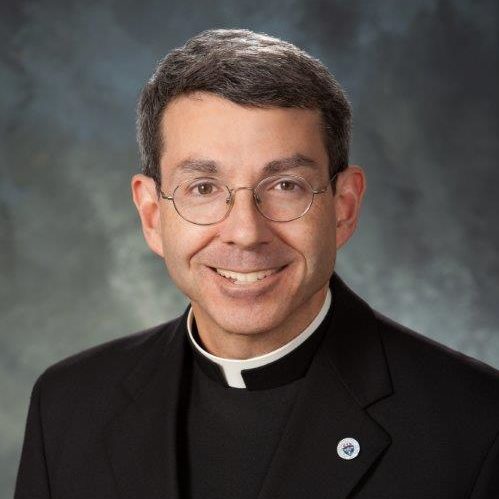 Father John Kartje | Current Rector
Father John Kartje | Current Rector
